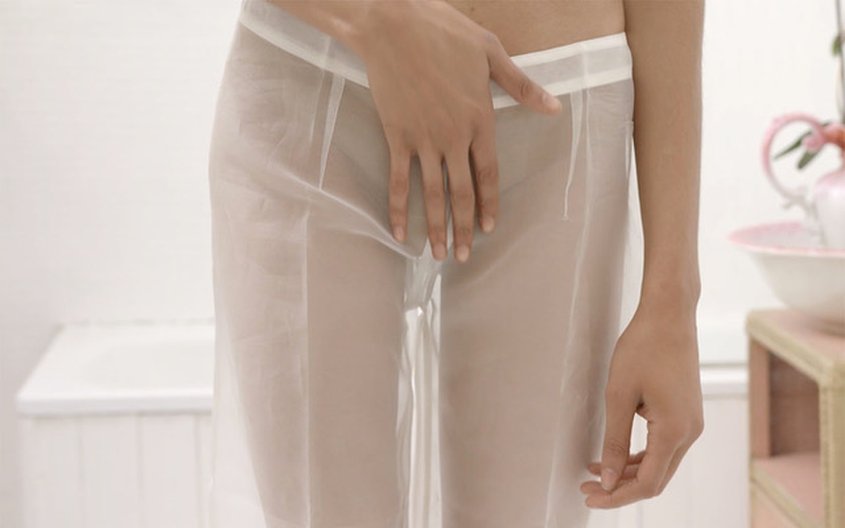13 September 2018
by Gulia Tomasello
Design Connections 10x10 will return this year on Wednesday 19 September, showcasing a selection of the best emerging design talent in the UK, in collaboration with the Design Museum. We caught up with speaker Gulia Tomasello, to find out more about her practice.
Tell us about yourself or your practice.
Interaction Designer and Researcher specialised in interactive wearables, biotechnology and material finishes around the field of women’s healthcare. By designing alternative scenarios and acting as a creative thinker, I use material research as a personal drive, to develop experimental work and to expose challenges in the intersection of medical and social sciences.
Winner of the STARTS Prize 2018, the Grand Prize of the European Commission honouring Innovation in Technology, Industry and Society stimulated by the Arts. Awarded for the artistic exploration and art works where appropriation by the arts has a strong potential to influence or alter the use, development or perception of technology.
What are you working on at the moment?
At the moment I am working on three projects related on women's healthcare and female taboos; one of them is a collaboration with three PhD scientists from University of Cambridge. We recently won a funding from the Biomaker Challenge to develop a project around vaginal discharge. Creating a wearable biosensor to monitor vaginal discharge as a hope to enable women to take up a more active role in their healthcare, prompting them to seek medical sadvice as necessary and ultimately break some of the taboos associated with urogynecological health.
What key issues are you addressing with your work?
Future Flora is a harvesting kit designed to treat and prevent vaginal infections. The project tackles the experience of growing living organisms at home, enabling the female to become a participant in the culture and knowledge of science.
Considering science and technological advancements as a guiding vision to educate personal healthcare. Future Flora provides the experience of wearing live bacteria cultures as a second membrane and second skin. The user is a woman that wants to embrace biotechnology in her house, allowing science to show alternatives to medicine and pro-biotic pills prescribed from pharmacies.
As designer my aim is to raise awareness towards female social taboos, providing an alternative to our intimate treatment by nurturing the living organisms that balance the body equilibrium of our vaginal flora. Taking care of her own health, the woman becomes a citizen scientist, establishing a first relation with her body and what is part of her living surrounding. Clothes and accessories become the ecosystem that balance the entire skin microflora.
Tell us about something you’ve seen that’s inspired you recently? Tell us about something you’ve worked on that’s made you feel proud?
At Ars Electronica Festival I recently discovered Microbiome Rebirth Incubator, a project from the artscientist François-Joseph Lapointe (CA) and art historian Marianne Cloutier (CA).
The Microbiome Rebirth Incubator is a device designed to seed babies born by emergency c-section with vaginal bacteria and breast milk essential to infant growth, either by dipping the newborn in the incubator, or by soaking a sterile compress in the probiotic cocktail to wash the baby’s mouth, face and body. The project symbolically explores the possibility of repairing the microbiome, as a way to re-empower the mother and her child, and to erase the traumatic experience of caesarean birth.
Last year, I’ve been invited as an artist, to develop a collaborative project on the word cunt and its reclamation.
TNUC is a zine, an attempt at reframing and reaffirming some of the meaning lost behind the word cunt, researching the history, etymology, social and cultural understandings of the word. This exploration almost immediately inspired to liken the character of the physical cunt with the fruit pomegranate.
“Pomegranate is cunt.
It’s curvy.
It’s a Her.
When you cut it, it bleeds.
It tastes acidic.
It’s edible.
It has a womb with seeds.
In art history pomegranates
painted alongside
beautiful women
symbolise their
abundance and fertility.
In Saudi Arabia men
sing to a pomegranate
to courting women” –
Giulia Tomasello and Ahaad Alamoudi (SA)
Here a Podcast we recorded about ‘Cunt Qualms’ in collaboration with NTS Radio and Baby Face.
To hear more about Gulia's Tomasello work, join us at 6pm on the 19 September at the Design Museum. Find out more and book your tickets here.
Category
British Council Project



